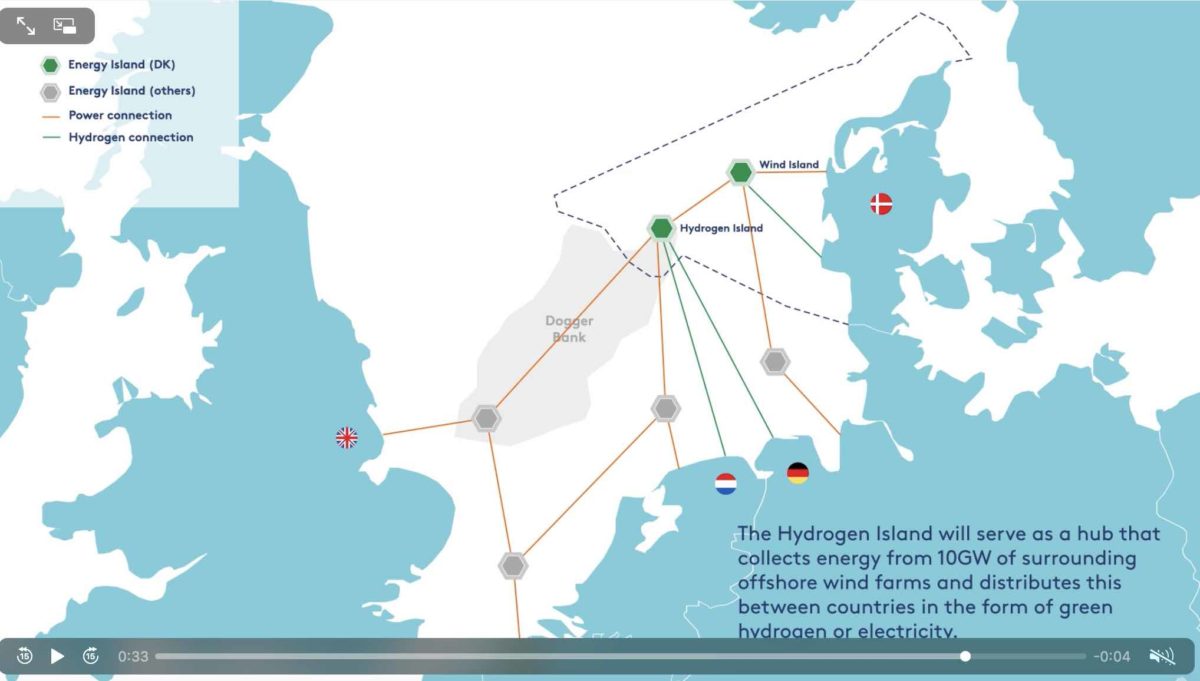A leading Danish investment firm has proposed a huge artificial “hydrogen island” in the North Sea which would be connected to 10GW of offshore wind, and capable of producing one million tonnes of green hydrogen each year.
Copenhagen Infrastructure Partners (CIP), which has interests in Australia, including with the Star of the South offshore wind project, says the proposed island, to be called BrintØ, or “Hydrogen Island”, could provide up to 7% of Europe’s expected hydrogen use in 2030.
The island would be located on the Danish part of Dogger Bank, a massive shallow sandbar stretching across the North Sea from the east coast of England across to within the North Sea boundaries of Denmark, Germany, and the Netherlands.
Extending over 17,600 square kilometres, water depths range from 15 to 36 metres, making it a perfect site for offshore wind farms due to low water depths and strong wind resources, including the 3.6GW Dogger Bank offshore wind farm close to England.
CIP says energy islands will be crucial to supporting the 180GW of offshore wind that is planned for the North Sea.
Unlike Denmark’s two offshore wind-based energy islands proposed for the North Sea and Baltic Sea, which would be home to between 2GW and 10GW of wind capacity, and which could also be potentially co-located with green hydrogen production – the BrintØ project would focus only on producing green hydrogen.
“The Danish, German, Dutch, and Belgian ambitions for the North Sea show the rest of the world how the green transition can be turbo-charged if you dare to think big, internationally and in integrated systems,” said Thomas Dalsgaard, a partner at CIP.
“Green energy will be harvested on a large scale out at sea, tied together by energy islands, converted into green hydrogen, and transported across borders via offshore hydrogen infrastructure.
“The opportunities are significant, and the Danish BrintØ is the first step in that direction.” CIP says the island could be producing green hydrogen by 2030.
A video illustrating the BrintØ hydrogen island vision can be seen at the proposal’s website.










